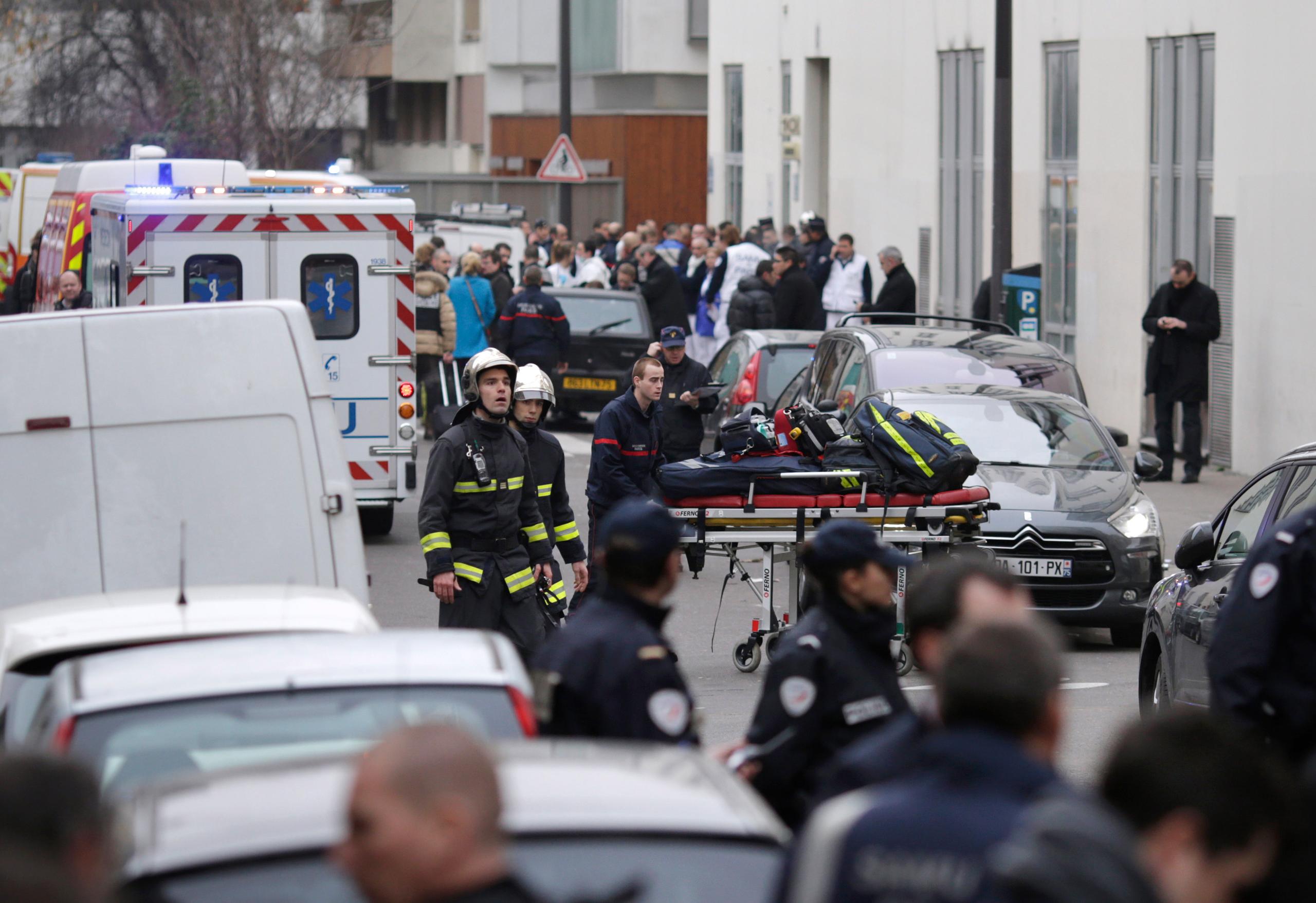‘Freedom of speech has to be protected at all costs’
The attack on satirical magazine Charlie Hebdo in Paris on Wednesday, in which 12 people died, has led to anger and dismay around the world, especially among satirists. But no subject can be taboo for cartoons, says Anette Gehrig, director of the Cartoon Museum in Basel.
The museum is one of the few in Europe dedicated to the art of satire. Gehrig deals on a daily basis with satire, which provokes a range of reactions, from laughter to indignation or anger.
swissinfo.ch: What reactions did the attack trigger in you?
Anette Gehrig: I’m shocked, and emotionally it‘s been especially hard, because not only do I know the magazine, but I knew the cartoonists Cabu und Wolinski [who were among the victims of the attack].
swissinfo.ch: Charlie Hebdo is known for its provocative caricatures, which have also mocked Islamic extremism. Have you exhibited caricatures like these in the museum?
A.G.: The museum does address these critical themes. We’ve had exhibits, like one by the German cartoonist Ralf König, that have dealt with the cartoon controversy.
swissinfo.ch: Some Muslims feel that the caricatures are attacks on their religion. Can you appreciate this?
A.G.: Fundamentally, you have to look at where the cartoons are being published. You expect satire from a satirical magazine. Charlie Hebdo is deeply rooted in French culture. The magazine has a history. The public expects these sorts of themes to be addressed there. It’s a totally different medium from a museum.
swissinfo.ch: What’s the difference?
A.G.: From a museum you expect context, treatment of the topic. When, in the case of certain topics like religion, the political climate is already heated, then naturally these issues have to be addressed very delicately in exhibits. It’s up to me as curator to present these themes in a way that also clarifies the background.

More
Swiss condemn massacre of Charlie Hebdo journalists
swissinfo.ch: Are there lines that satirists shouldn’t cross?
A.G.: In a satirical product like Charlie Hebdo there shouldn’t be any boundaries, but a museum is different. A museum has a very different purpose. Here, other approaches are taken, the themes are addressed and presented in a wider context to make them more palatable.
swissinfo.ch: If you take the sensitivities of a certain group into account, don’t you risk censoring yourself, or at least curtailing freedom of speech?
A.G.: That’s not what I mean to say. Freedom of speech has to be protected at all costs. But in a museum an environment can be created that makes certain themes more accessible to people who might otherwise not be able to tolerate them emotionally.
swissinfo.ch: Would you present the Islam-critical caricatures of Charlie Hebdo in your museum or not?
A.G.: We would present them with their context. Just to hang them up would not be an option.
swissinfo.ch: Doesn’t a caricature have to be a bit disrespectful and ruffle a few feathers?
A.G.: There’s a difference between ruffling feathers and respect. Cartoonists put themselves in situations, but they also put themselves in people’s sensitivities. They get very close to people. But they want their cartoons to achieve something. That’s the fine art of caricature: to walk this fine line.
swissinfo.ch: Following the attacks in Paris, will you be more careful in your selection of cartoons or will you push the limits even further?
A.G.: Something inconceivable has happened, and first we need time to process it. We’ll have to look at the issue from all sides. But as a museum we’re always working at the limit. We have to ask ourselves which themes are important to society. And that is something we’ll continue to do.
(Translated from German by Jeannie Wurz)

In compliance with the JTI standards
More: SWI swissinfo.ch certified by the Journalism Trust Initiative










You can find an overview of ongoing debates with our journalists here . Please join us!
If you want to start a conversation about a topic raised in this article or want to report factual errors, email us at english@swissinfo.ch.